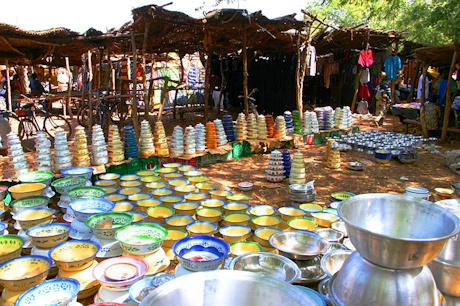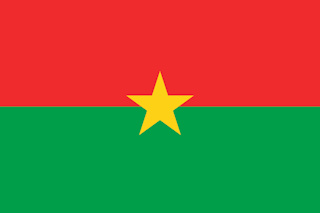Travel to West Africa, to Burkina Faso - a land-locked country where a wealth of wildlife inhabits the dusty grasslands of the north and tropical forests in the south. Then scroll down for some of our printable resources!

A Little Geography…
- Burkina Faso is a land-locked nation surrounded by six countries – Mali, Niger, Benin, Togo, Ghana and Côte d’Ivoire.
- It has a population of around 18 million people, known as Burkinabés, living in an area of about 274,000 square kilometres. A high population density in some areas, combined with limited natural resources, has been a challenge for the country’s economy.
- Most of Burkina Faso lies on a flat plateau, but the land rises in the south. The highest peak is Mount Ténakourou at 747 metres.
- Burkina Faso used to be called ‘Upper Volta’ – named after the three rivers running through the country (the Black Volta, Red Volta and White Volta).
- The capital is Ouagadougou. Other interesting town names include Gorom-Gorom and Bouroum-Bouroum. The official language is French, but less than 15% of the population speak it on a daily basis. Instead, over 60 native languages are used in different parts of the country.
- Burkina Faso is Africa’s largest producer of cotton, but its main export is gold.
A Little History…
- From around the 11th Century, Burkina Faso was ruled by the Mossi tribes. French colonists arrived 1896, but the Mossi fought back. Although the French took control in 1901, they worked alongside Mossi leaders.
- In 1932, the country was carved up between richer neighbouring nations. But it fell under French control again in 1947, and was named ‘Upper Volta’.
- Burkina Faso gained independence from France in 1960. But in the intervening years, the country has experienced many military coups and power struggles.
- In 1983, Thomas Sankara took over in a military coup. He renamed the country Burkina Faso (Land of the Honest People). Known as the ‘Che Guevara’ of Africa, Sankara was a socialist who believed in women’s rights. He even created a national day for husbands to do the family shopping! But Sankara made enemies, too, and was assassinated in 1987. His successor, Blaise Compaoré, ruled for the next 27 years, but protests led to his resignation in 2014.
And Some Interesting Facts…
Burkina Faso has nearly 500 bird species, thanks to its varied habitats in the north and south. The country also has four national parks that are home to elephants, leopards, buffalo, cheetah, crocodiles and hippos.
In some parts of Burkina Faso, crocodiles are thought to be sacred animals. They live side by side with villagers and are fed on a diet of chickens. Since the 14th Century, some Burkinabés have associated the Nile crocodile with the rainy season and an end to drought.
The country is known for its rich artistic and musical culture, particularly drumming. With over 60 different ethnic groups, the country has a wide variety of musical styles.
About the Burkina Faso Flag

The national flag of Burkina Faso is made up of two equal horizontal stripes of green and red, with a yellow five-pointed star in the middle. The flag was adopted on 4 August 1984.
Our Burkina Faso Resources
Colour the top stripe red and the bottom stripe green, and the star yellow. There! You've coloured in the flag of Burkina Faso!
Print out the Burkino Faso flag in four different sizes and use for craft projects and displays.
Can the children place Burkina Faso in Africa? We have two location worksheets to download and print: a blank version for older children and a guided version for younger kids.
Our simplified outline map of Africa puts Burkina Faso into context and shows its size and neighbouring countries.
This simple worksheet allows children to recall what they have already learned about Burkina Faso.

